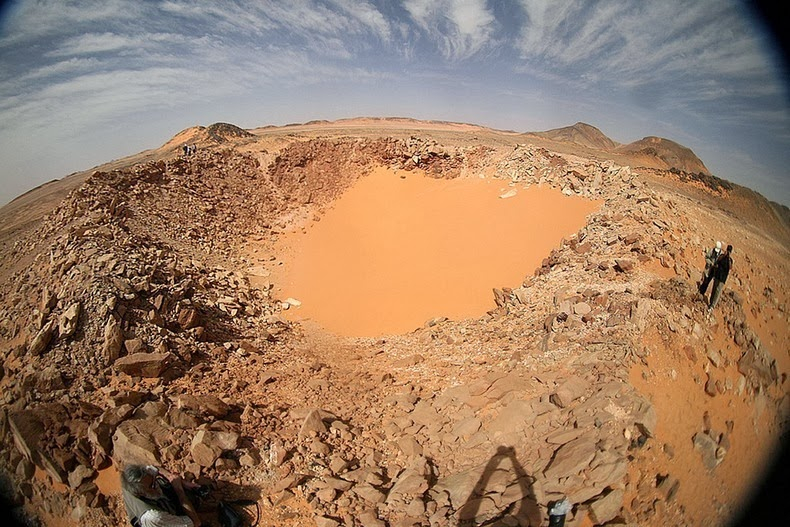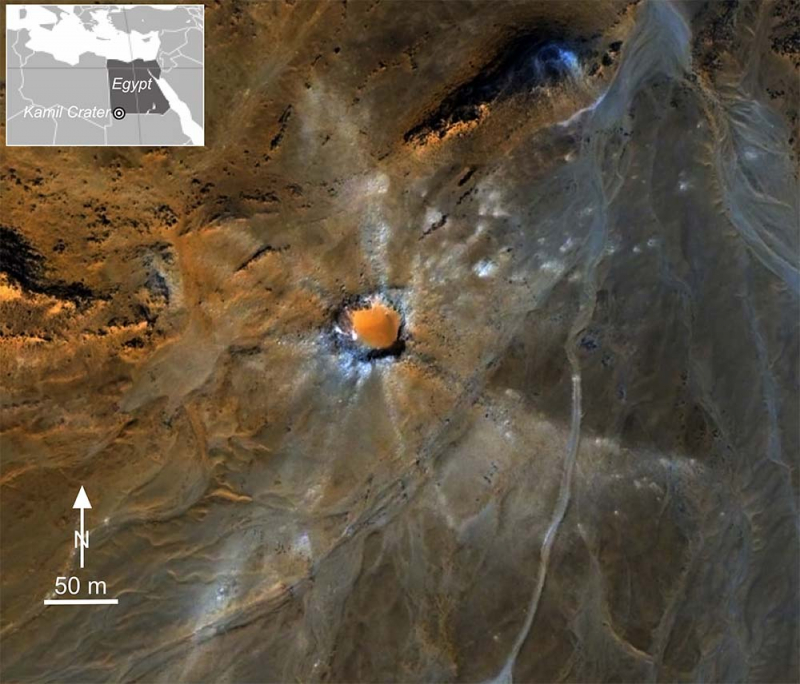Kamil Crater

An Italian researcher discovered the Kamil Crater using satellite imagery in yet another Google Earth discovery. The world's most preserved crater may very well be this one. Normally, craters fade away over time, but bedrock has preserved the Kamil Crater.
A 45 m-diameter impact crater called Kamil was discovered in southern Egypt in 2008. It was produced by the Gebel Kamil iron meteorite's hypervelocity impact on layered sandstones with subhorizontal bedding, a sedimentary target. A variety of shock features typical of target rocks rich in quartz can be seen in ejecta samples found in Kamil Cater.
According to their frequency at the thin section scale, they have been separated into two groups: pervasive shock features, which are the most frequent, which include fracturing, planar deformation features, impact melt lapilli, and bombs, and localized shock features, which are the least frequent, which include high-pressure phases and localized impact melting in the form of intergranular melt, melt veins, and melt films in shatter cones. The smallest impact crater known to have reported shatter cones, coesite, stishovite, diamond, and melt veins is Kamil crater.
Pervasive shock features infer that the maximum shock pressure was between 30 and 60 GPa based on experimental calibrations that have been documented in the literature. Kamil is a perfect environment for studying impact cratering and shock deformation processes in small impact structures because of the variety of shock features it contains and how recently it occurred.
- Where: Kamil Crater, Egypt
- Year of Discovery: 2008











